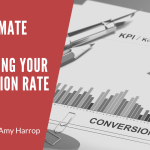 You’ve done the heavy lifting and written your latest manuscript and all that’s left to do is to make it available for purchase. Now you can sit back, relax and watch the sales and income you’ve longed for start rolling in.
You’ve done the heavy lifting and written your latest manuscript and all that’s left to do is to make it available for purchase. Now you can sit back, relax and watch the sales and income you’ve longed for start rolling in.
Your book is launched. You wait in sweet anticipation, and…
Crickets!
The truth is that even when you’ve gone to great lengths to write an exceptional book, it doesn’t mean that all the pieces of the puzzle will fall together perfectly and lead to the robust book sales you desire.
If you’ve ever found yourself in this situation you’re probably still scratching your head wondering where you went wrong.
Simple Questions to Troubleshoot Slow or No Book Sales
If you feel like throwing your hands up and abandoning your latest book offer because you’re not seeing results, stop and take a deep breath, then try to look at the situation from a different perspective.
When you take a closer look at things you’ll discover that the problem isn’t usually with the quality of your book, but rather the mechanisms working together behind the scenes to create the momentum you want to see in your sales.
Ask yourself the following questions to troubleshoot where you could be going wrong and figure out how to course correct your way to more sales.
- Have you written a book your audience actually wants to read?
The first step to diagnosing sluggish book sales involves taking a good hard look at your book.
While it’s rare, and it would hurt to admit it, sometimes a book just isn’t appealing and no matter what you do it ends up dead in the water without an audience that wants to read it.
The biggest culprit behind this type of scenario is writing a book without first identifying a very specific audience for it. Always remember, generic books that try to target everyone usually end up appealing to no one.
Instead of going too broad with your theme, make the effort to research your target audience thoroughly and niche down to find an angle that appeals to a very defined type of reader.
- Have you built a relationship with your audience?
Smart self-publishers know that the key to success lies in building relationships with members of your target audience. The same thing goes for getting the maximum amount of sales possible for your book.
It many not seem like it, but every sale of your book begins long before your would-be customer clicks the checkout button in their shopping cart.
From the time they first become aware of you, your book and your brand, each interaction you have with your prospect draws them closer to making the decision to buy your book.
If you haven’t made a solid connection with members of your target audience through your author blog, social media channels and email list, it’s time to go back to the drawing board and work on deepening your relationships before asking for the sale.
- Have you built up enough anticipation for your book?
Have you ever been really excited about the upcoming release of a movie?
If so, chances are you watched trailers promoting the film for months or weeks in advance and you were aware of the movie’s release date well beforehand.
What does this have to do with your book sales doing well?
Anticipation.
Aside from being genuinely entertaining, perhaps the most important determining factor for robust box office ticket sales lies in the level of excitement and anticipation that the intended audience experiences during early promotional campaigns carried out by movie studios.
Apply this same strategy and philosophy to your books and you’ll be well on your way to record sales which every new release.
- Have you promoted your book continuously?
Once you’ve built up awareness and launched your book successfully, you may be crushed to notice your once brisk sales have slowed down dramatically after a few days, weeks or months, not doing as well as they did in the early stages.
If you see this happening with your latest book, consider the fact that you may be losing the momentum you established with your initial marketing push. Things may be slowing down because there’s no consistent effort to keep things trending upwards.
Just like launching a rocket into outer space, it takes much less effort to keep your book sales going that it does to get your first few sales. Always be consistent with your book marketing strategy to keep things moving in the right direction.
- Have you crafted a tantalizing cover image and blurb for your book?
When you pick up a physical book, the first thing that tends to happen is a swift judgement of its contents based on the look of its cover, quickly followed by flipping it over and reading the back in order to get a quick synopsis of what the book is all about.
This powerful cover image and back page blurb combination has worked for decades to entice readers into buying new books based on the promise of what awaits them inside its pages.
But, when you’re a self-publishing author that deals mostly with digital books, how do you get this kind of powerful impact when you don’t have a physical medium to work with?
You can still reap the benefits that typically come with marketing physical books by having an excellent eBook cover design and taking the time to craft an alluring blurb that teases your prospect with just enough information for them to want to know more about what lies within the pages of your book.
- Have you gotten unbiased book reviews?
One of the most influential factors on the sales volume of products is the quality and quantity of the reviews of the product in question.
This truth applies just as much to self-published digital book sales even more so than a product you can see and actually hold in your hand.
Always make sure that your book has a good amount of reviews ready to go from the moment you launch your sales page or very shortly after.
You can gather your initial reviews by giving copies of your book away to influencers or even everyday readers in your niche, asking them to share their thoughts about it with you.
You then ask for their permission to share their reviews either on your sales page or in the review section of the platform you are using to sell your books, such as Amazon Kindle.
- Have you given your book away for free?
Aside from making sure that your book is priced optimally for regular sales and worthwhile profits, there are other ways that you can use pricing (or lack of it) to stimulate book sales.
If you’ve never considered it before, think about giving your book away at no cost for a limited time or to a limited number of readers in order to get the word out about your new offer.
A move like this is very effective for newer self-published authors who are looking to establish themselves and attract a significant number of new fans.
Whether you’re selling your book through a platform like Amazon Kindle or directly from your own website, try giving it away (even the first chapter or two) and see if it works well for generating new reviews and stimulating more sales.
Take the time to troubleshoot your absent or sluggish book sales and watch as your negative sales trends turn around with each positive change.



